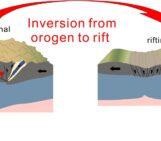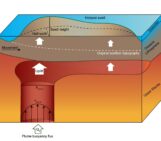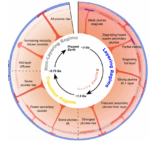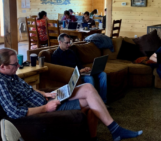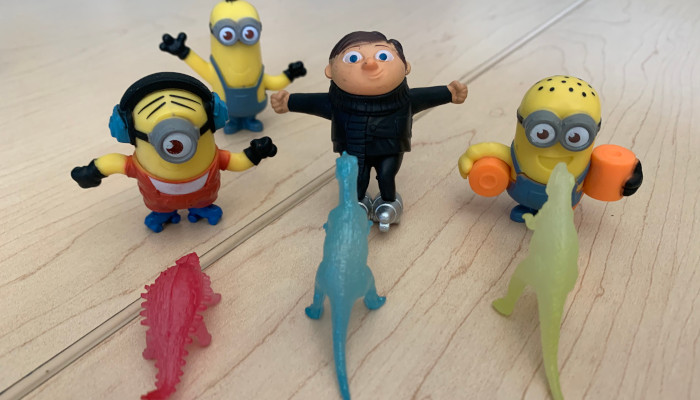
Last year we introduced the ASPECT hackaton on this geodynamics blog. It was the first hackathon which went virtual which brought a whole set of new challenges. This year was the 8th version of the yearly hackathon, and it was still virtual (unfortunately). Fortunately lessons where learned from the previous virutal hackathon and generally from working more than a year online. Therefore a short blog post about the setup and also the progress during this hackathon.
As hinted to in the introduction, reproducing an in-person hackathon, or any event for that matter, online is difficult. For example, by not “locking people up” in the same house for ten days, the participants are spread over time-zones from Hawaii to central Europe. And maybe even more importantly, you can’t just tap someone on the shoulder to ask a question or easily go and sit in a corner with a small group to solve a specific problem. Furthermore, in a virtual setting it is much harder to see if participants are struggling and offer them help.
Last year we used a set a Zoom rooms where we had a main room, a European time zones room, a room to relax and some open room to move to if you wanted to discuss issues without disturbing others. The main room was used for the presentation and “morning” round during the core hours. The core hours are the hours where all participant, independent of their time-zone, are expected to be online. The morning rounds are an hour every day during core hours of taking time to calling on everyone individually and ask them 1. what they have done since the last morning rounds, 2. what they are planning to do until the next one, and most importantly, 3. what they need help with.
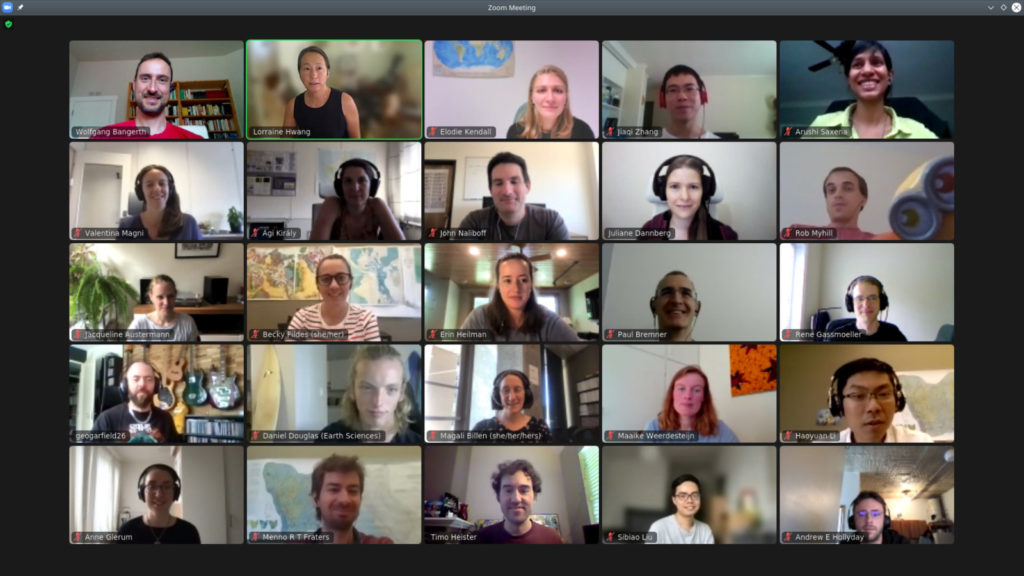
participants of the 2021 ASPECT hackaton. Full list of names can be found at https://geodynamics.org/cig/events/calendar/2021-aspect-hackathon/participants/
This worked quite well last year, but there was some room for improvement. It was hard to keep taps on everyone and prevent some participants from getting lost on an issue for much longer than necessary. This had to do with the questions being asked by participants where directly to only a developers, overwhelming them. Furthermore, it was hard to know who is online and available for questions or a quick chat, because you had to know in which Zoom room someone was, and then go to a new Zoom room together to not disturb the others in the room too much. So a quick virtual tap on the shoulder usually was quite a hassle.
To address these two issues, two changes where made:
- Each participant was (self) assigned to an ASPECT developer. This developer functions as the first point of contact for questions if the participant doesn’t know who to ask a specific question to. This certainly doesn’t main it is the only this person is the only one to ask questions to. The developers task was to check in every day after or before morning round to really make sure the participant didn’t get stuck. Time during a hackathon is limited, so it should not be lost on getting stuck! This helped a lot in both spreading the load to more developers and did a much better job of checking in on all the participants.
- Although we still used Zoom rooms for large meetings such as the morning round and presentations, everything else was switched to wonder.me. For those who attended some of the social events during the last EGU, wonder.me is very similar to gather.town, just a bit more abstract. You are basically a circle in a large 2D white space, where you can more around. Some zones where created to show whether you where away, currently chatting or just working quietly, and if you moved to a circle of another person a video chat automatically opens. This, at least for me, much better recreated the experience just tapping someone on the shoulder to have a quick chat. Although there where some software issues and limitations, it was very easy to see what is going on. You can quickly see who has time to chat or ask a question.
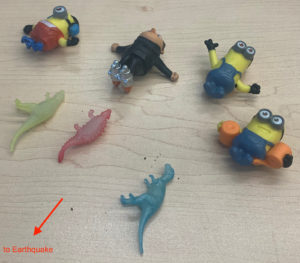
The dinos and minions fell over due to an earthquake. An arrow has been added to show where the earthquake came from.
Up to now I have focussed on the work part of a hackathon, but an arguably even more important part of a hackathon is the social part: building connections with people with last long after the hackathon has ended. This is good for both the participants and the project. It is good for the participants because the they get to know the diverse set of people in the ASPECT community (from mathematicians to geodynamicsts specialized in areas from ranging short/long term tectonics to whole mantle and even core dynamics) and thereby make connections which can help them in their own projects. It is good for the project, because it removes barriers for working on ASPECT or ASPECT related improvement after the hackathon is done. The hackathon is only 10 days long, and it is best for the project if people want to keep contributing. And this is where the images of the dinos and minions come into the picture!
It is hard to recreate re-create the community sense in a virtual setting, but one of the organizers, Lorraine Hwang, had the great idea of sending “survival packages” to all participants. They contained quite a few oddities and some snacks. Last year one of the oddities was that they had small dinos in there which light up in the dark. These where a great success and the adventures of the the dinos where documented meticulously by some of the participants. This year it was the year of the minion, so all participants received, among other things like a connect the dot picture, miniature minions (and/or related characters). They travelled on weekend trips, made music with Garfield, experienced earthquakes and had a stand-off with the dinos from last year.

